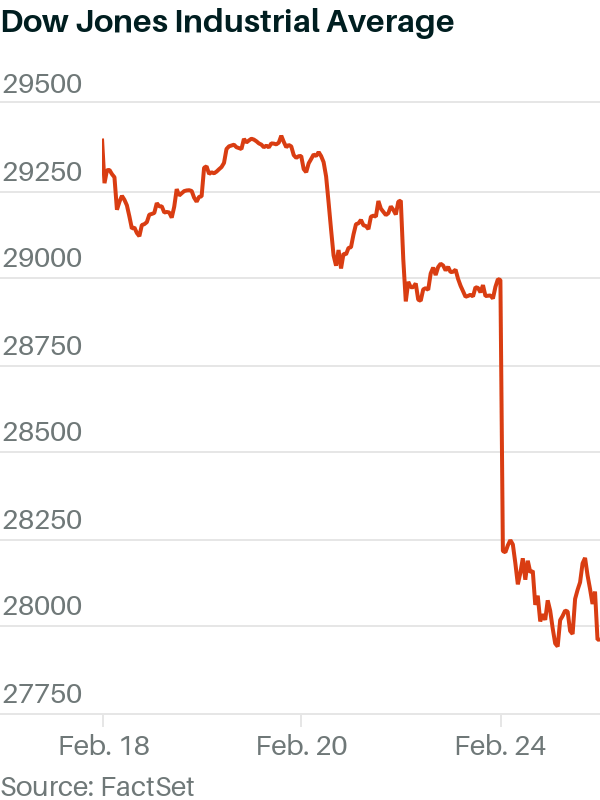Understanding Dow Futures: What They Mean for the Stock Market
In today’s volatile economic landscape, understanding the stock market is more crucial than ever. One significant indicator that investors often watch is the Dow Futures. But what exactly are Dow Futures, how do they impact the stock market, and why should business leaders and HR professionals care? This blog post will address these questions, providing a comprehensive overview of Dow Futures and their implications for the market.
What Are Dow Futures?
Dow Futures represent the anticipated value of the Dow Jones Industrial Average (DJIA) at the opening of the stock market the next day. Essentially, they are a type of financial derivative that allows traders to speculate on the future movements of the stock market indices. If investors expect the stock market to rise, Dow Futures will typically increase, and vice versa.
Investors use Dow Futures as a tool for hedging against market volatility or speculating on future price movements. This means that understanding how Dow Futures operate is critical for anyone involved in financial planning or investment strategy.
The Significance of Dow Futures in Today’s Market
Recent trends show fluctuations within the stock market due to various economic factors, such as interest rates, inflation, and global news events. On days when significant events occur—like the recent drop projected for the Dow Jones Industrial Average, which was set to decline by 800 points—the Dow Futures serve as an early indicator of market sentiment.
According to a recent article in Barron’s, the DJIA was predicted to drop significantly due to rising concerns in the market. As such, monitoring Dow Futures provides a glimpse of market movements prior to the stock exchange’s opening bell.
How Dow Futures are Calculated
To fully understand Dow Futures, it’s essential to know how they are calculated. The DJIA itself is a price-weighted index, meaning that companies with higher stock prices have a greater influence on its movements. Dow Futures are derived from this index by taking the current prices of the 30 large companies that make up the DJIA, adjusting for the expected changes due to market news and conditions.
This calculation allows traders to speculate on future movements based on a variety of factors, including economic indicators, corporate earnings reports, and geopolitical events. The futures contracts are available for trading before the market opens, allowing investors to position themselves based on expectations.
Factors Influencing Dow Futures
Understanding what drives Dow Futures is crucial for informed investment decisions. Several key factors influence these futures:
- Economic Data Releases: Information about employment rates, GDP growth, and other economic indicators can sway investor sentiment.
- Corporate Earnings: Strong earnings reports from major corporations can lead to positive movement in Dow Futures.
- Global Events: Events such as elections, natural disasters, or geopolitical tensions can dramatically impact market sentiment and thus Dow Futures.
- Monetary Policy: Actions by the Federal Reserve regarding interest rates can influence overall market dynamics.
Dow Futures and Business Decisions
For HR professionals and business leaders, the implications of Dow Futures extend beyond financial investment. Understanding these futures provides insights into market trends that can inform business strategies. For instance, a significant drop in Dow Futures might suggest potential challenges in the economy, prompting companies to review their hiring strategies, budgetary constraints, and expansion plans.
Conversely, a positive outlook indicated by rising Dow Futures could encourage companies to invest in new projects and hire talent, fostering growth. Essentially, Dow Futures can serve as an early warning system that can help leaders make data-driven decisions.
Strategies for Monitoring Dow Futures
Incorporating an understanding of Dow Futures into your business operations involves several strategic approaches:
- Regularly Track Economic Indicators:Keep an eye on key economic reports that affect market sentiment. Subscribing to reputable financial news sources will help you stay informed.
- Analyze Data Trends: Use data analysis tools to identify patterns in Dow Futures. Companies can leverage business intelligence platforms for better forecasting.
- Establish Risk Management Protocols: Use knowledge of market conditions to develop risk management strategies that can protect business interests during downturns.
Conclusion
In summary, understanding Dow Futures offers valuable insights into the stock market’s expected movements and can significantly impact business decision-making. For HR professionals and leaders, leveraging this information can guide strategic planning, hiring, and investment strategies. As you navigate the complex landscape of finance and business, keep an eye on those futures; they may just predict tomorrow’s success.








